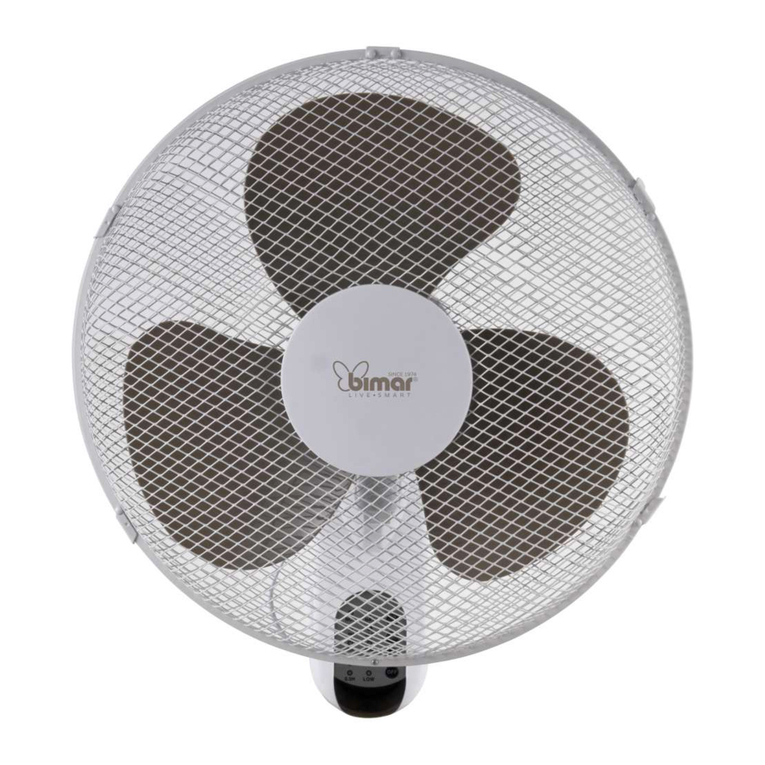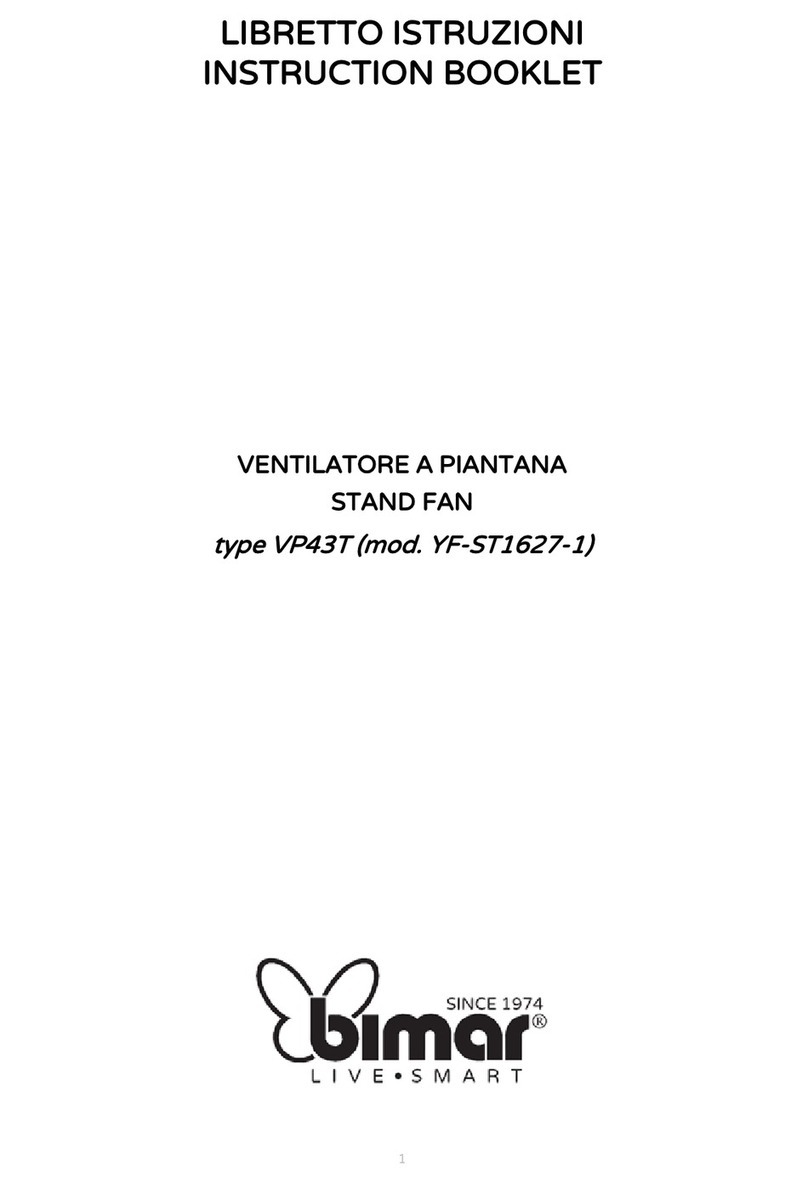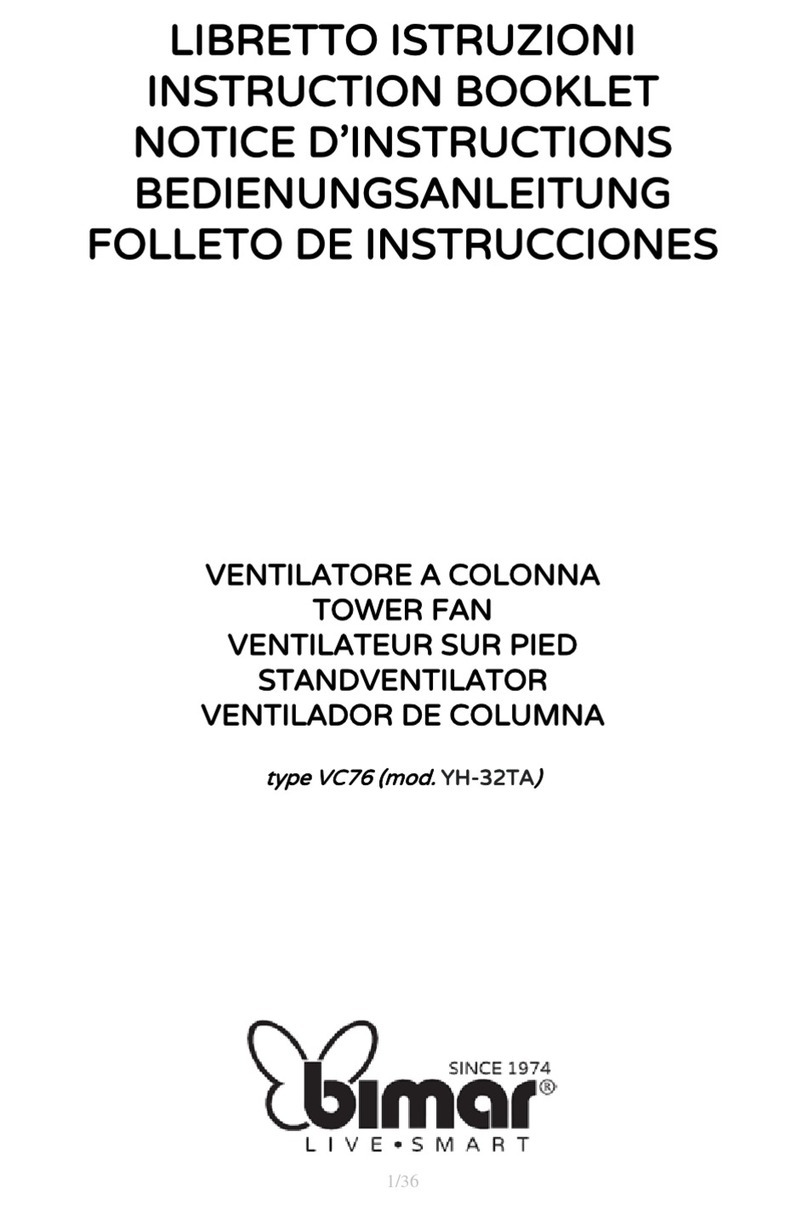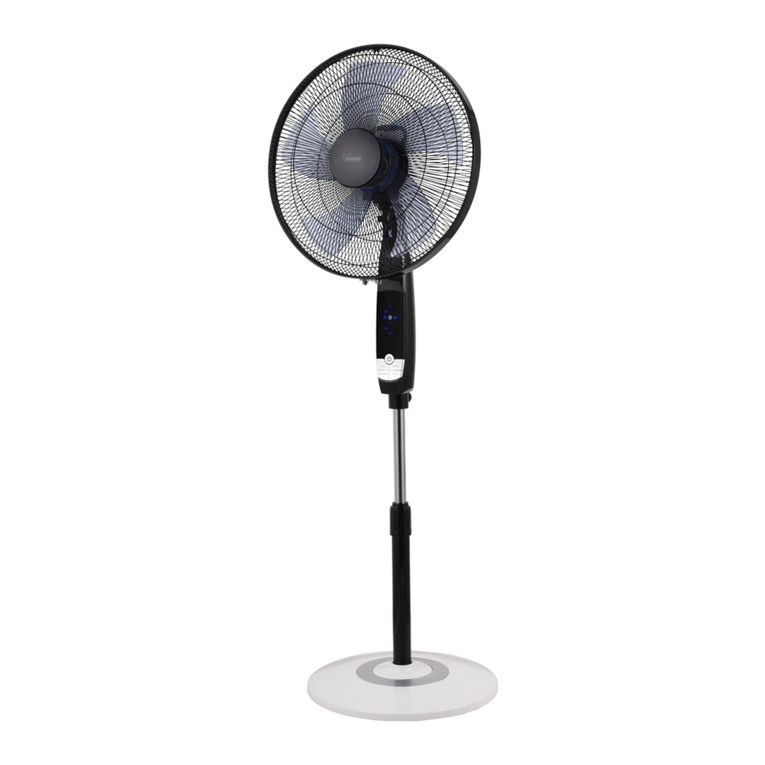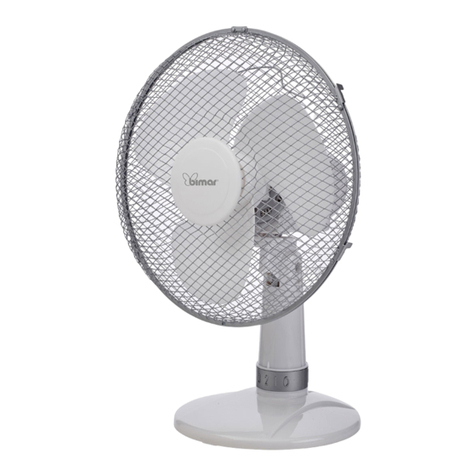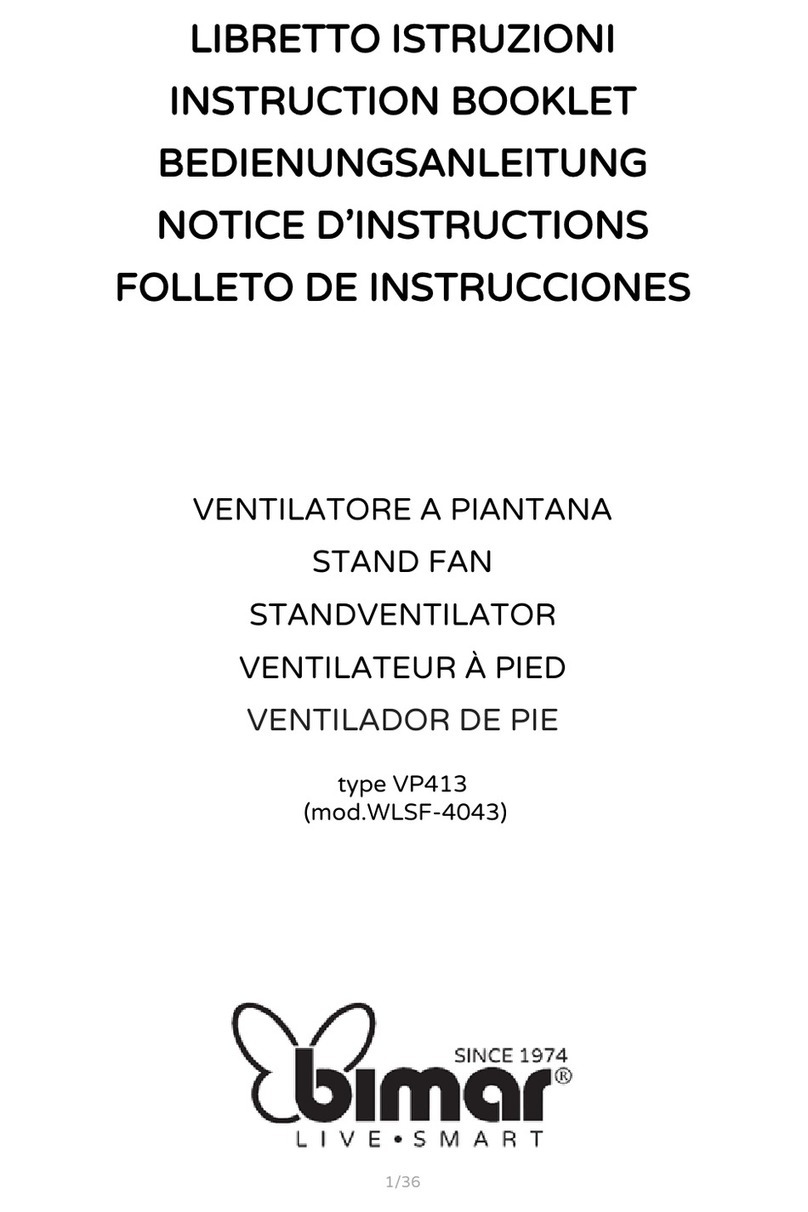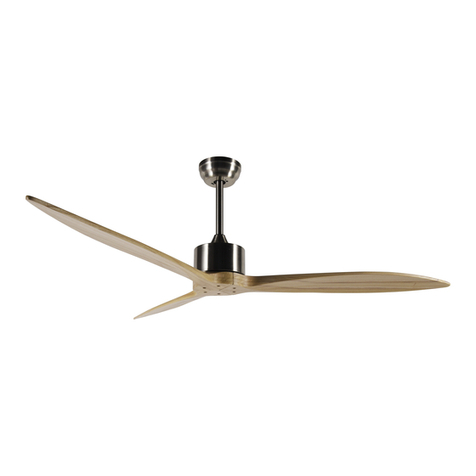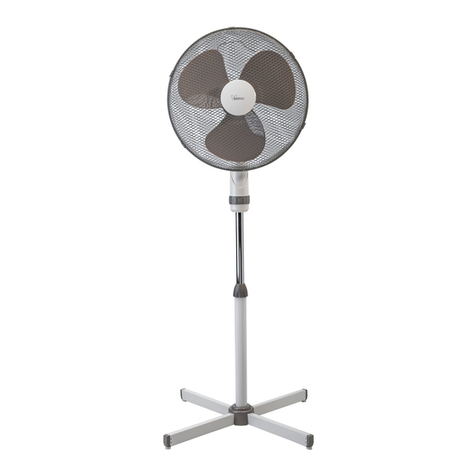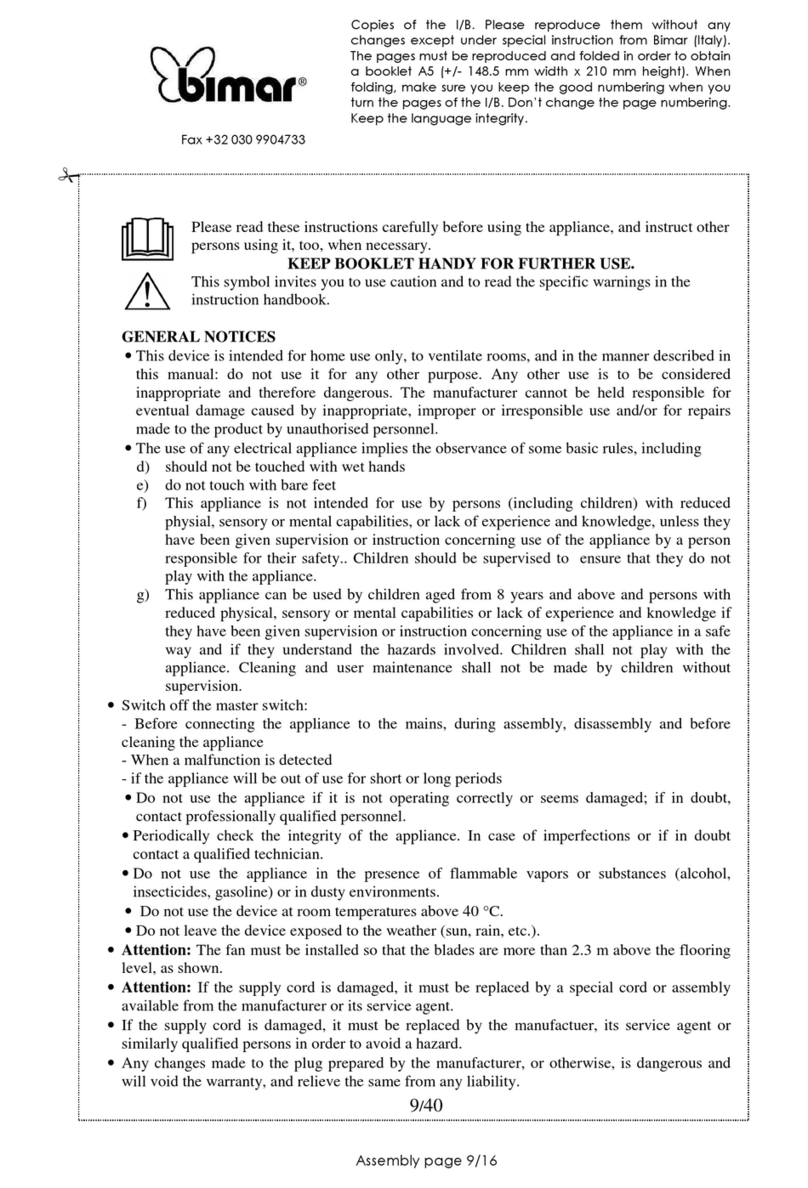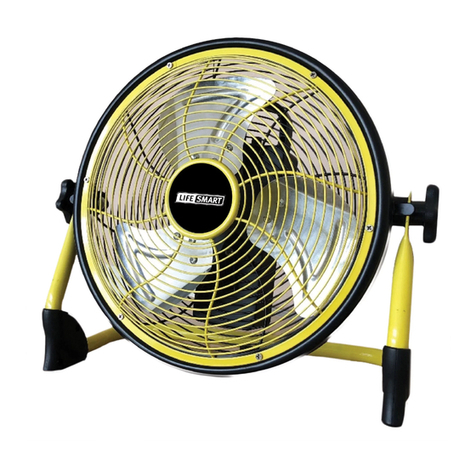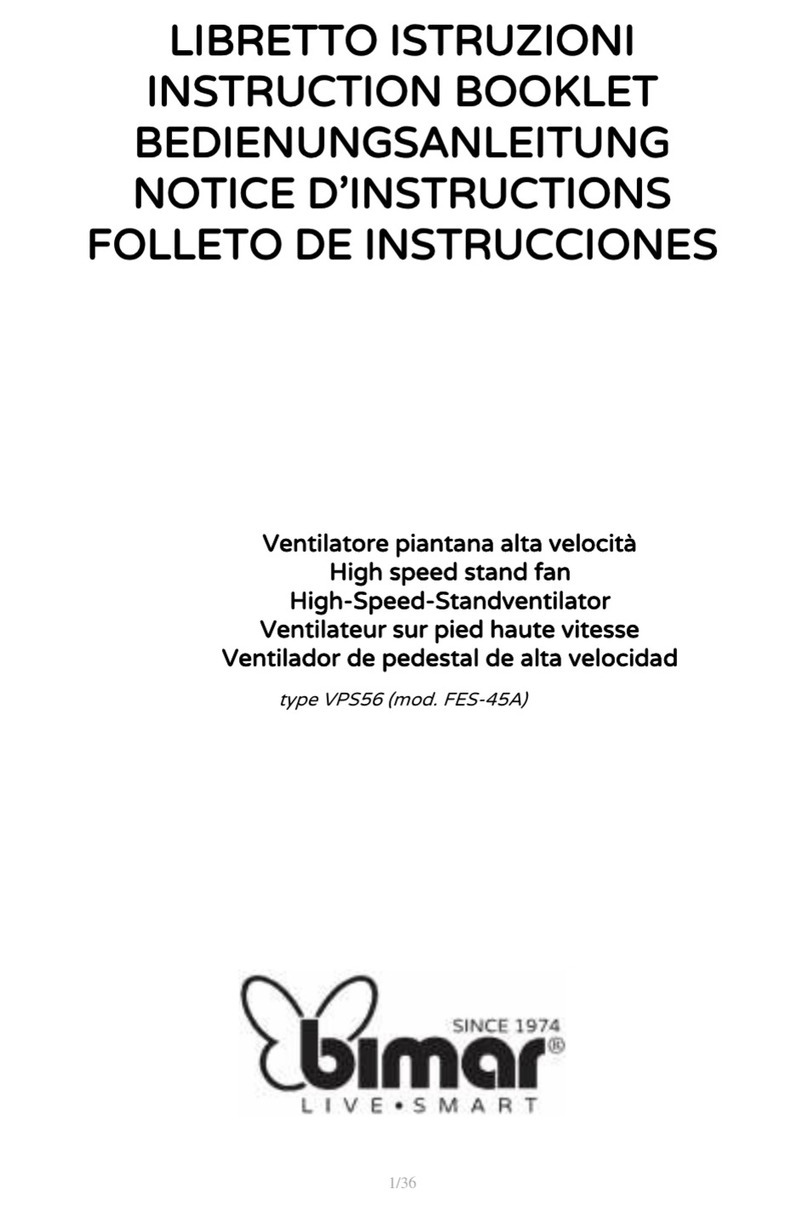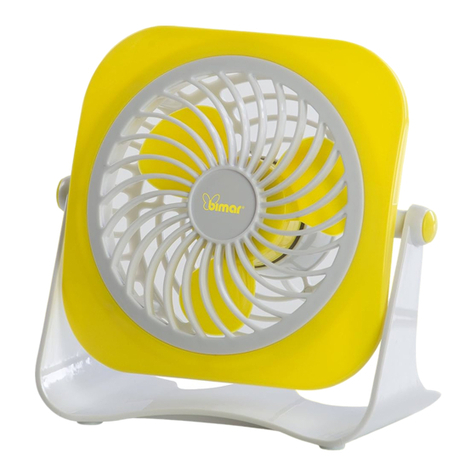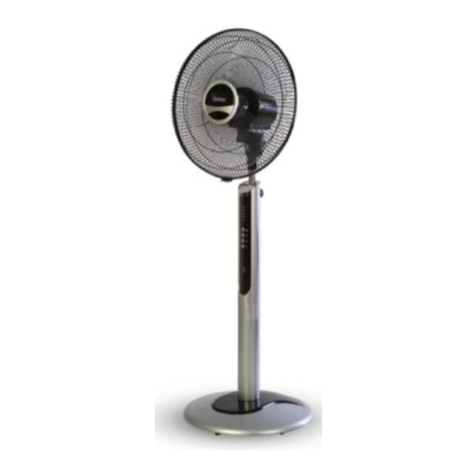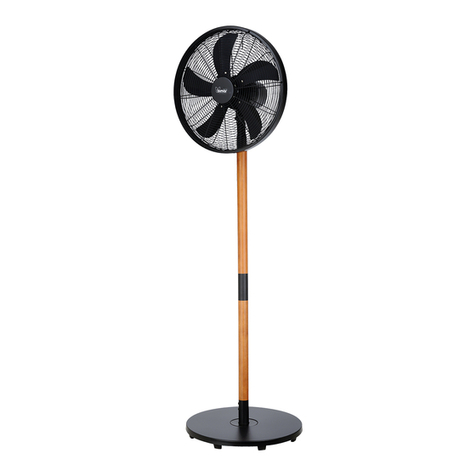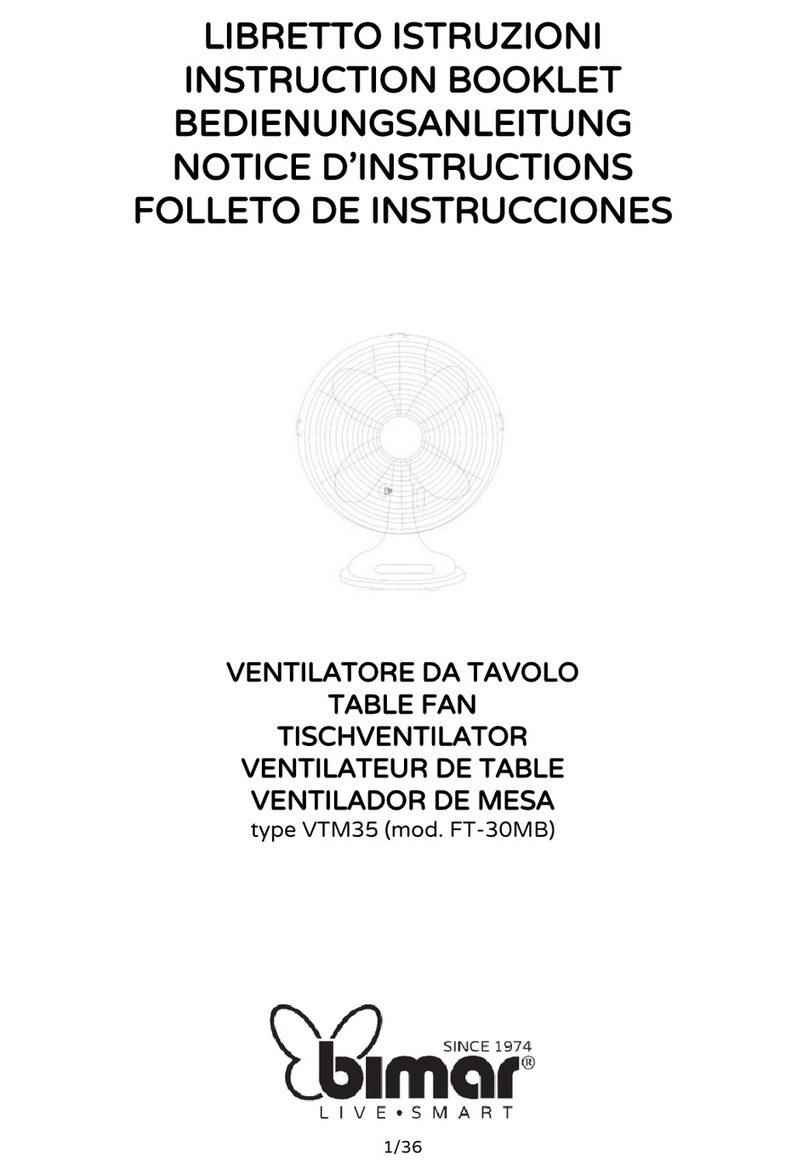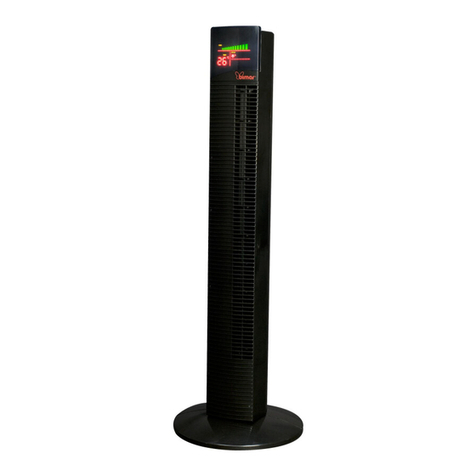
5/44
•Assicurarsi che il ventilatore sia scollegato dalla rete di alimentazione
prima di togliere lo schermo di protezione .
•Dopo aver tolto l’imballaggio, assicurarsi dell’integrità dell’apparecchio; in caso di dubbio non
utilizzarlo e rivolgersi a personale professionalmente qualificato. Gli elementi d’imballaggio
(sacchetti di plastica, polistirolo espanso, chiodi, ecc.) non devono essere lasciati alla portata di
mano di bambini in quanto potenziali fonti di pericolo, ma vanno smaltiti secondo le norme vigenti
negli appositi contenitori per la raccolta differenziata.
Tutti gli elementi dell'imballaggio vanno smaltiti in base alla propria materia prima (vedi il
simbolo impresso su ciascuno), e conferiti alla loro raccolta in base alle disposizioni del proprio
Comune. Il sacchetto contenente viti oppure altre parti, che per le misure ridotte è privo di
marcatura, è da smaltire seguendo le disposizioni del proprio Comune.
•Prima di collegare l’apparecchio controllare che i valori di tensione riportati sulla targa dati
corrispondano a quelli della rete elettrica. In caso di incompatibilità tra la presa e la spina
dell’apparecchio, far sostituire la presa con altra di tipo adatto da personale professionalmente
qualificato, il quale accerti che la sezione dei cavi della presa sia idonea alla potenza assorbita
dall’apparecchio. In generale è sconsigliato l’uso di adattatori e/o prolunghe; se il loro uso si
rendesse indispensabile, devono essere conformi alle vigenti norme di sicurezza e la loro portata
di corrente (ampere) non deve essere inferiore a quella massima dell’apparecchio.
•Prima di ogni utilizzo verificare che l’apparecchio sia in buono stato, che il cordone elettrico non
sia danneggiato: se il cavo di alimentazione è danneggiato, esso deve sostituito dal costruttore o
dal suo servizio assistenza tecnica o comunque da una persona con qualifica similare, in modo da
prevenire ogni rischio.
•La presa di corrente deve essere facilmente accessibile in modo da poter disinserire con facilità la
spina in caso di emergenza.
•Posizionare l’apparecchio lontano da:
-fonti di calore (ad es. fiamme libere, fornello gas, ecc. )
-contenitori di liquidi (ad esempio, lavelli ecc.) per evitare schizzi d’acqua o che vi possa cadere
(distanza minima 2 metri)
-tessuti (tende, ecc.) o materiali volatili che possano ostruire la griglia di aspirazione; verificare
che anche la parte anteriore sia sgombra da materiali volatili (polvere, ecc.).
•Questo apparecchio non è idoneo per impiego in ambienti con atmosfere esplosive con presenza
di sostanze infiammabili sotto forma di gas, vapore, nebbia o polvere (in condizioni atmosferiche
in cui, dopo l’accensione, la combustione si propaga nell’aria).
•L’apparecchio non deve essere utilizzato in ambienti polverosi o con materiali estremamente
volatili oppure in un locale che presenti rischi d’incendio.
•La superficie di appoggio deve essere stabile, non in pendenza (in quanto l’apparecchio potrebbe
ribaltarsi) e liscia.







